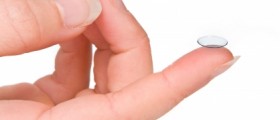
Swelling of the eyelids is nothing but accumulation of excess fluid in connective tissue of the eyelids. This problem is usually not serious and may easily heal on its own, without any medical treatment. Many times, swollen eyelids are associated with a variety of eye conditions.
Still, this problem may surprisingly also be a characteristic of diseases affecting distant organs, such as kidney disease. So, in case swelling in your eyelids does not subside spontaneously in a few days to a week, a person should undergo a thorough medical examination which will identify the underlying cause of swollen eyelids.
Allergy and Swelling of the Lower Eyelid
In the majority of cases, swelling of the lower eyelid (as well as swelling of the upper eyelid) is associated with some kind of allergy.
In women, or any person who uses cosmetics around the eyes, an allergic reaction may be caused by a makeup product, and cosmetic products applied near the eyes.
Another possible allergic cause of swollen eyelids would be if you are affected by other allergies like an allergy to certain plants, animals, medications, or dust. It is not difficult to confirm eyelid swelling due to allergic reaction, and many people will additionally have symptoms such as redness, sneezing, and tickling in the throat. In more extreme cases, allergies can obstruct breathing. Swollen eyelids as a result of allergic reactions is prevented by avoiding potential allergens, and treated easily if the allergen is not difficult to avoid.
Conjunctivitis and a Swollen Lower Eyelid
Conjunctivitis, also called pink eye, is an inflammation and infection that affects the clear membrane of the eye covering the inside of the eyelids and the front portion of the eyeballs. This inflammation may be of bacterial or viral origin and in both cases is accompanied by swelling, usually of both eyelids. Apart from swelling, the affected eye becomes unbearably itchy. Conjuctivities can have various causes, and the treatment will depend on this. In all cases, artificial tears can provide relief.
Stye, Chalazion and Swollen Lower Eyelid
A stye represents an inflammation of the meibomian gland of the eyelid. It develops in the form of a very painful bump. The nearby skin is red and inflamed and in more severe cases, even the entire eyelid becomes edematous (fluid-filled). A stye can affect the upper or lower eyelid and is usually located near or at the very edge of the eyelid. Similar clinical characteristics are reported in case of chalazion, a blockage of the meibomian glands.
Sinus Infection and a Swollen Lower Eyelid
A blockage of the sinuses (especially blockage of the maxillary sinus) leads to an accumulation of pus and inflammation of the sinus and all the surrounding tissues. This is the reason why the lower eyelid in such case may become edematous as well. Treating the sinus infection would also eliminate the swollen eyelid in this case.
Blepharoplasty and Swollen Lower Eyelid
Blepharoplasty is a type of cosmetic procedure usually done on the upper eyelid. Also called an eyelid lift, the operation is meant to make the recipient look younger. The surgery is, however associated with swelling of both eyelids in its aftermath. This excess of fluid is gradually absorbed and enters the systemic circulation, allowing the eyelids to regain their normal appearance.
Eyelid Cellulitis and Swollen Lower Eyelid
Eyelid cellulitis is a severe bacterial infection affecting all layers of the eyelids. The infection may sometimes spread onto the nearby tissues and even affect the connective tissue behind the eyeball. Prompt treatment with potent antibiotics is in such case a must. The condition can cause severe complications and blindness is only one of them.

















Your thoughts on this
Loading...